A scissor-doored thunderclap that looked like a sketchbook fantasy and went 325 km/h in an era of VHS and pagers, the Lamborghini Diablo still crackles with danger and allure.
Born from Project 132 and unveiled in 1990, the Diablo kept the Countach’s theatre but learned restraint where it mattered. Chrysler’s brief custodianship honed the proportions into something cohesive. Wide hips, a prow as low as a curb, and those famous doors that open like a standing ovation. Early cars wore pop-up headlights that defined the decade. Post-1999, under Audi’s watch, they were replaced by fixed units and cleaner surfaces. Not everyone cheered, but the facelift signaled a new level of polish without muting the menace. Carbon fiber began to appear in the structure and panels, an early hint of the materials revolution to come.
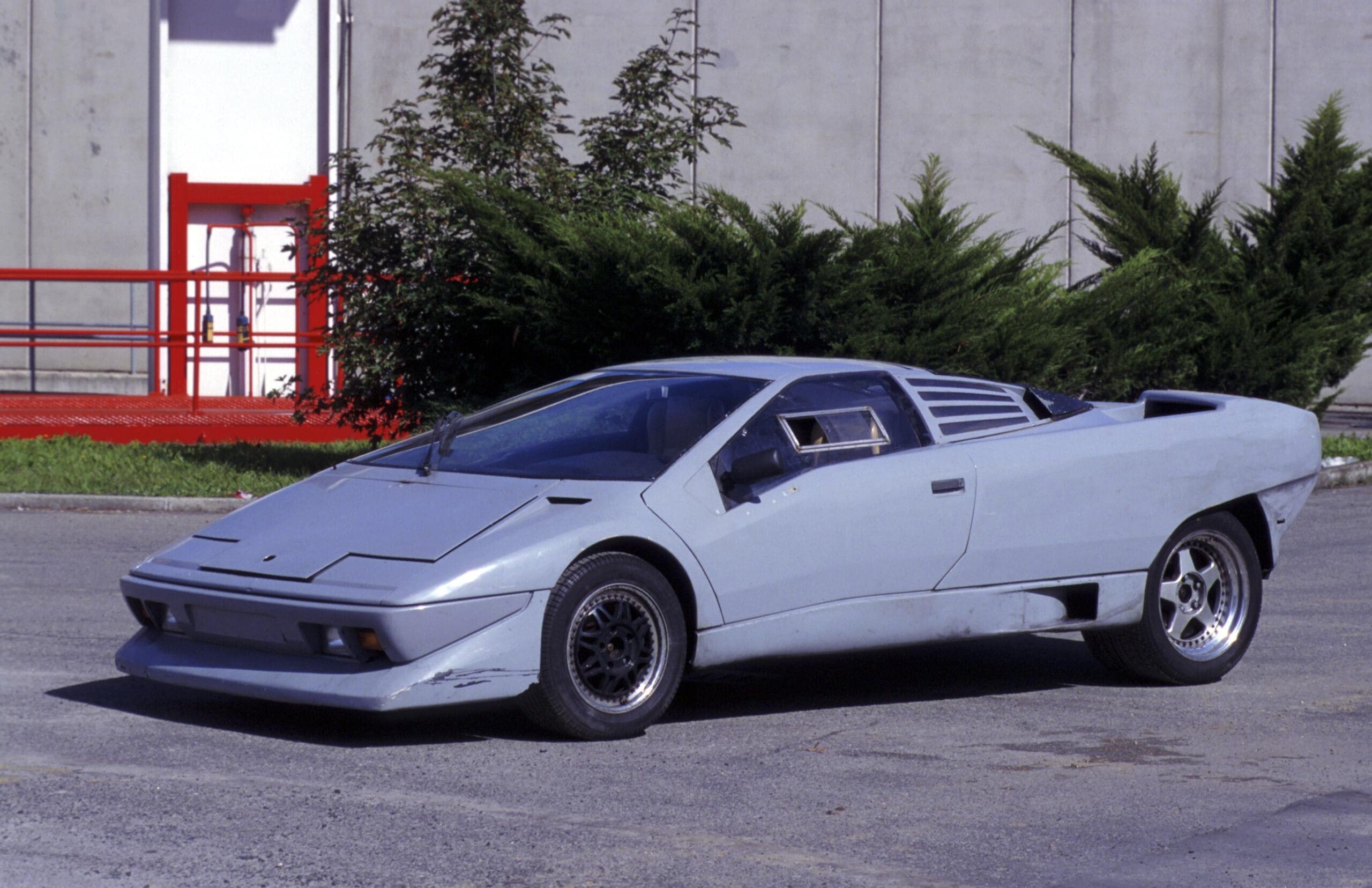
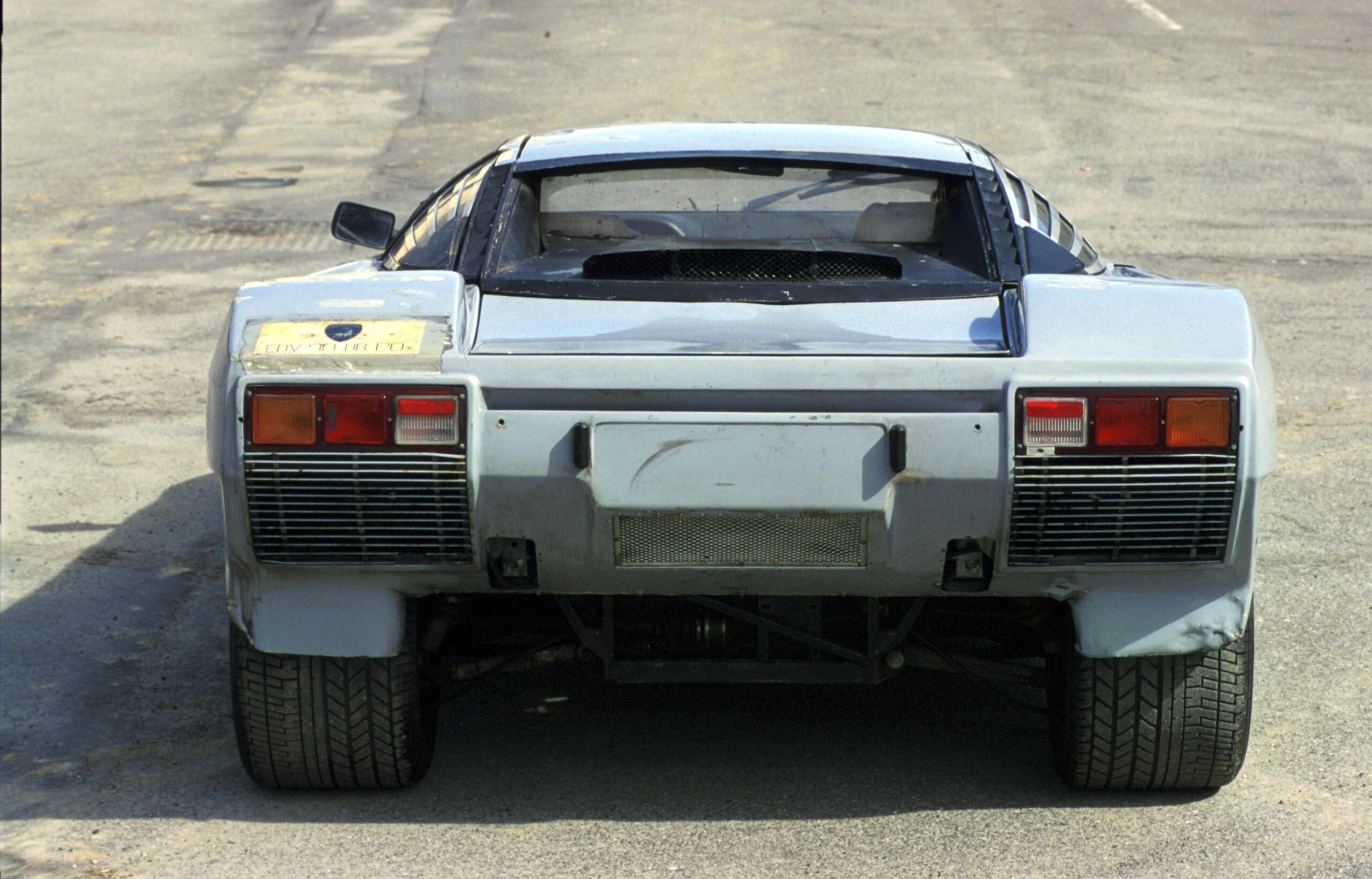
The cabin was still unapologetically Italian supercar: dramatic sightlines, a windshield like a visor, and a rear view half blocked by engine vents. Yet there was a newfound civility for the period. Adjustable seats, electric windows, an Alpine stereo, and better ergonomics than the Countach let you imagine crossing a country, not just a neighborhood. The driving position was slightly offset, the clutch solid, the steering heavy at a crawl. The smells were vivid. Leather, hot oil, warm rubber. The Diablo made every journey feel like a special occasion, even if you were just finding second gear.
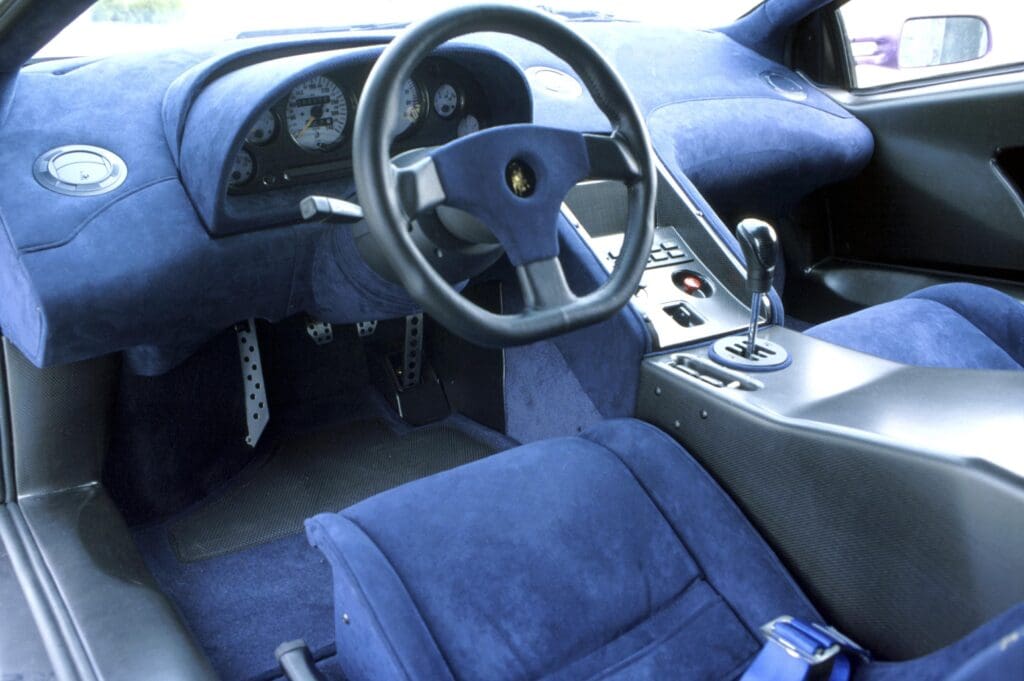
The headline number in 1990 was 325 km/h. That alone placed the Diablo among giants. The 5.7 liter V12 delivered 492 CV and around 4 seconds to 100 km/h, with a documented 337 km/h on Nardò for bragging rights. What mattered, though, was the way it did it. Long gearing, a crisp throttle, and a chassis that felt honest and alive on proper roads.
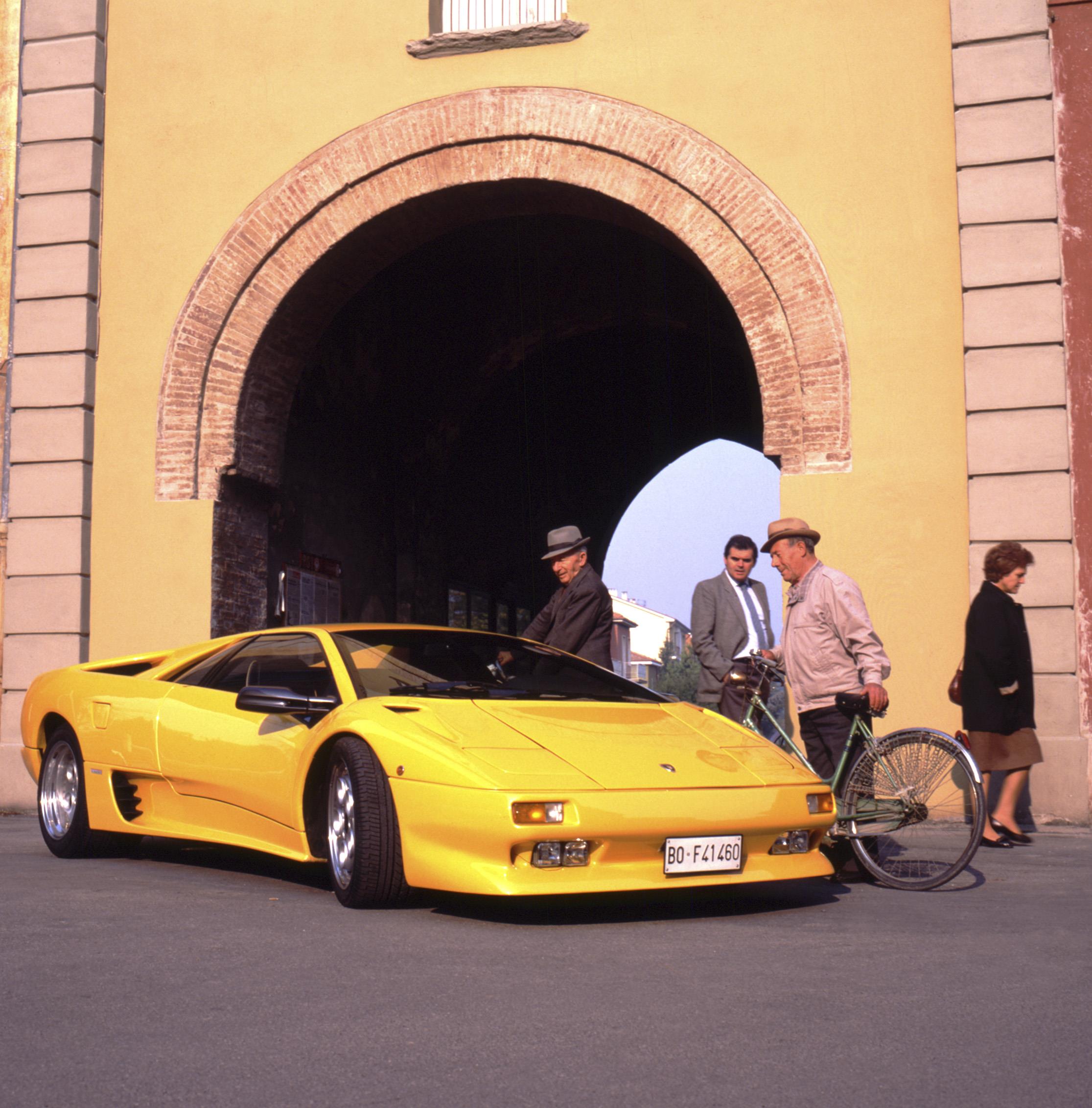
The 1993 VT brought all wheel drive with a viscous coupling, adding composure when the heavens opened and torque tried to escape.
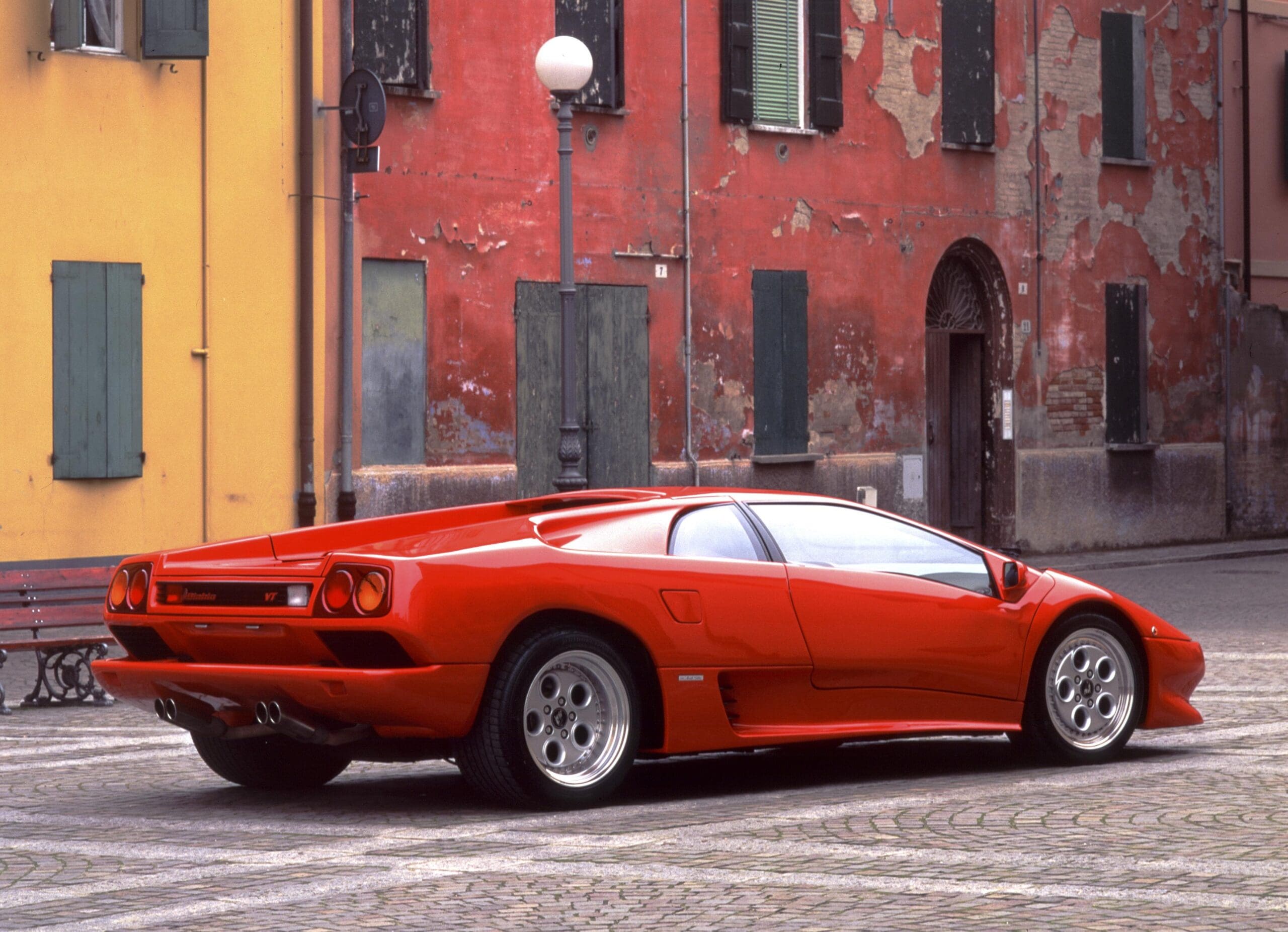
Special editions followed the arc of the 1990s: SE30 as the birthday present with 525 CV and a wilder Jota option, SV as the purist’s rear-drive hit, and the GT as the track-leaning apex at 575 CV and 338 km/h.
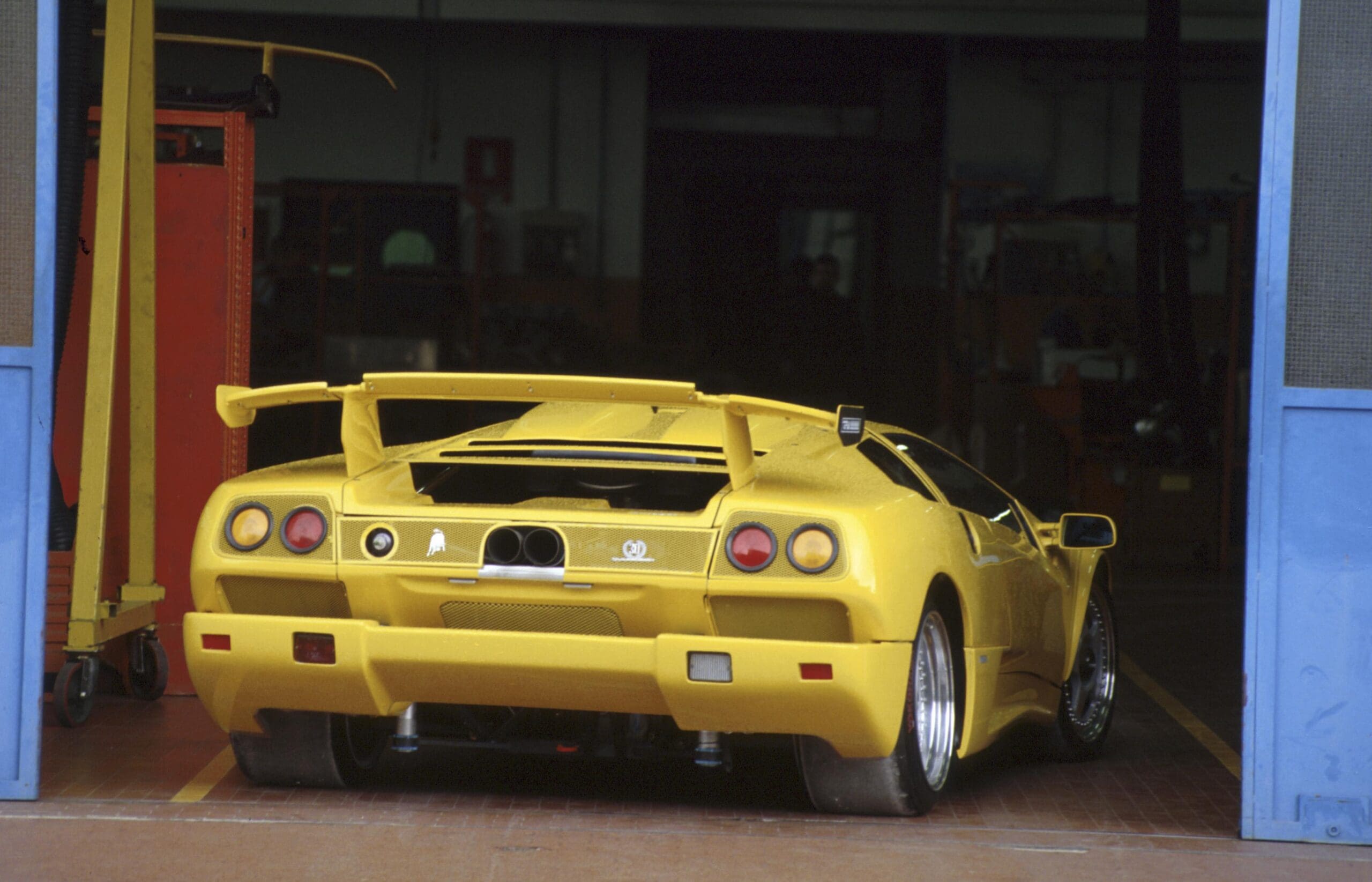
The final 6.0 models under Audi stewardship added ABS, a 6 liter V12 with 550 CV, and a layer of refinement that made the car faster and easier without dulling its edge.
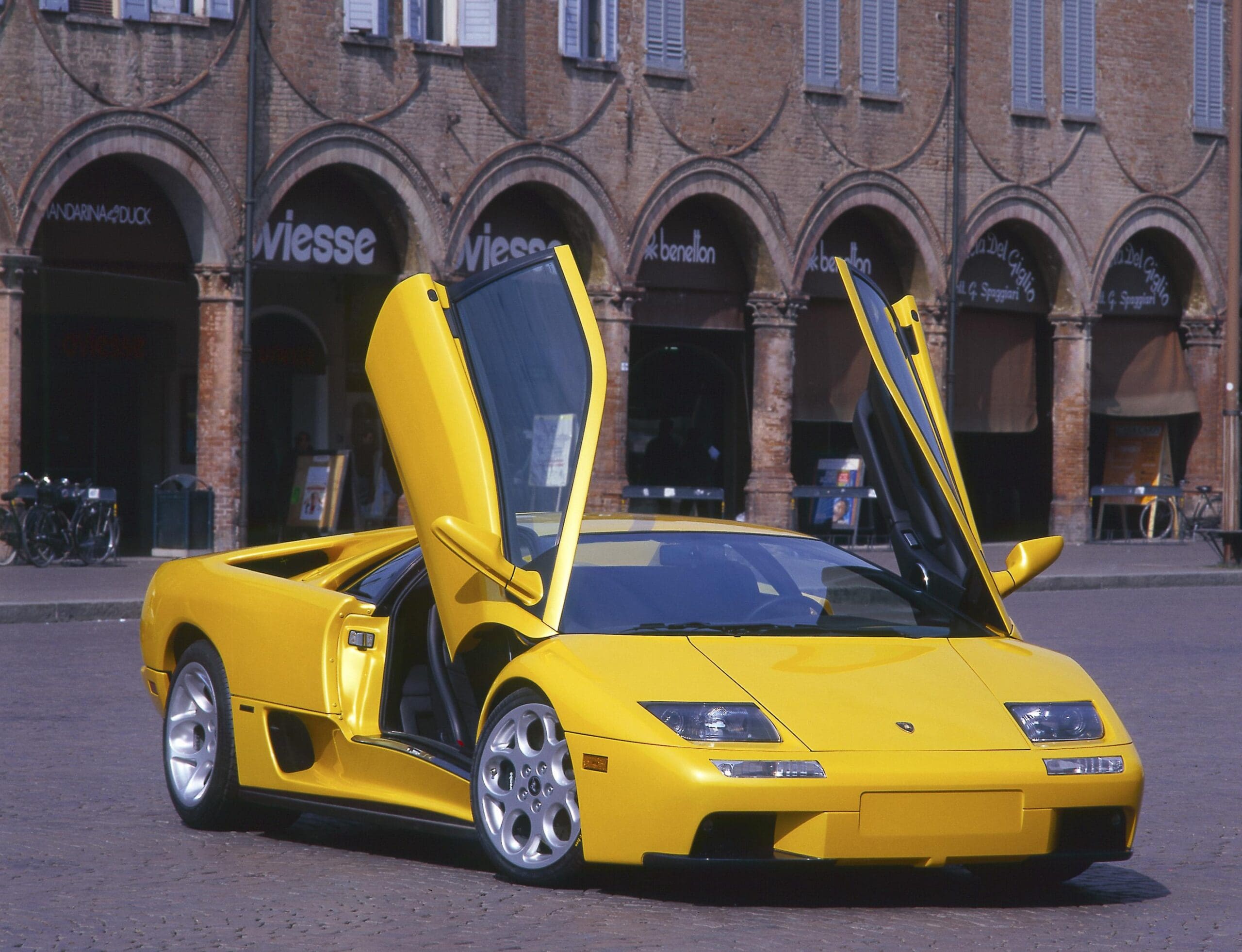
The Diablo transcended garages. It was red and ridiculous in Dumb and Dumber, suave in Bond’s Die Another Day, a fixture in Need for Speed, and a pop artifact in Jamiroquai’s Cosmic Girl. Box office wasn’t the only stage. Celebrities from Jay Leno to Mike Tyson bought them, and an entire generation papered bedrooms with posters. The car became a calling card for 1990s excess, but it also set a sales record for Lamborghini with 2,903 units. More than a halo, it was a bridge from a tumultuous past to a sustainable future. You can trace today’s Lamborghini customer programs back to this era. Even the 60-color palette hinted at Ad Personam before it had a name.
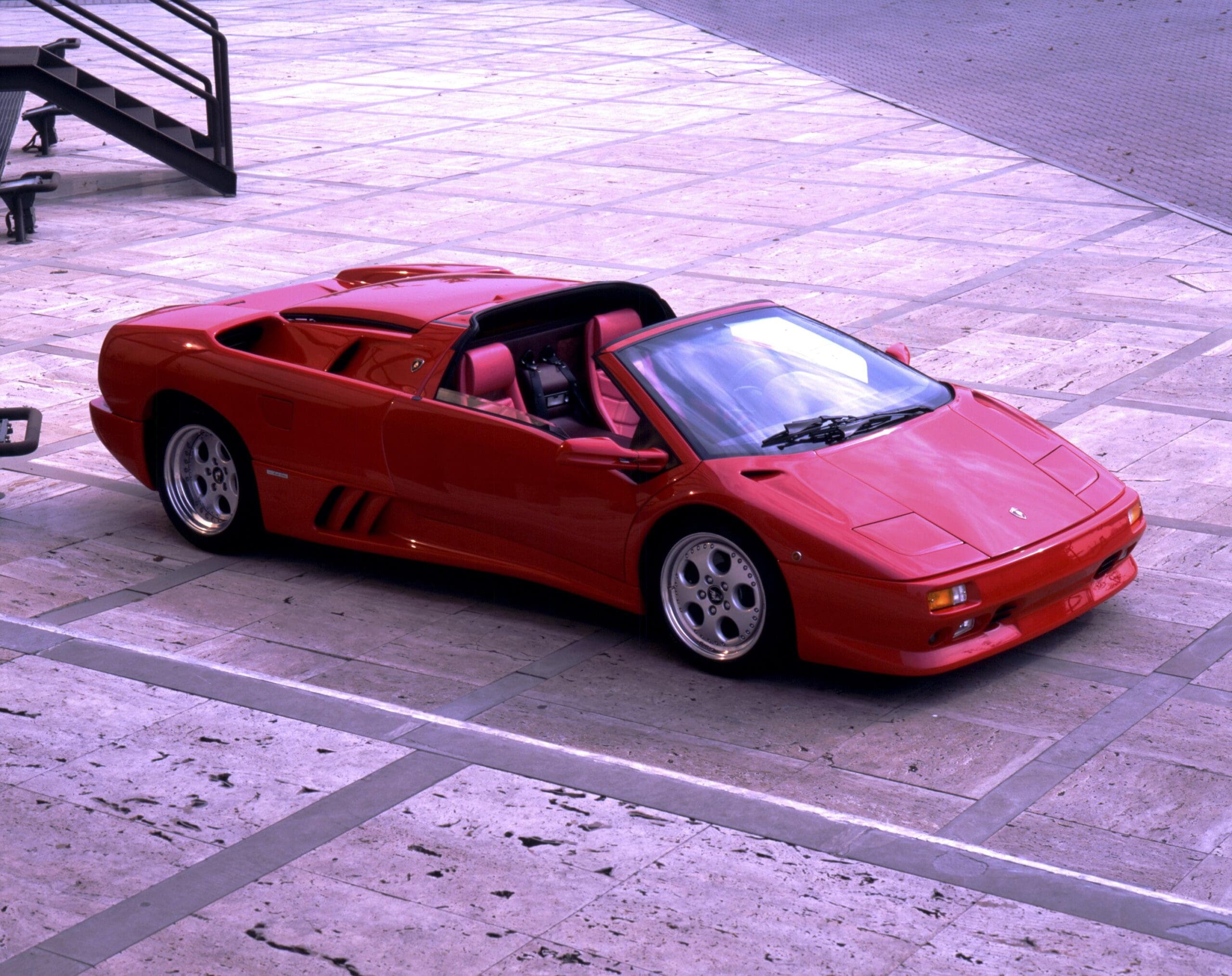
Early cars could feel demanding. Cooling in traffic needed attention. The turning circle was ship-like. The facelift’s loss of pop-ups still splits rooms. Yet these traits are part of the charm. The Diablo asks for commitment, then rewards with clarity and pace that remain startling on modern tarmac.
Values have risen with taste. SE30s, Jotas, GTs and the 6.0 SE are blue-chip, and Porsche-measured collectors now court Polo Storico certifications and restorations. A 1994 SE30 took a Pebble Beach podium in 2023, and the trend shows no sign of slowing. Provenance and factory paperwork matter. So does originality in a world of period body kits and wild paint.
The Diablo is more than a loud V12 with party doors. It is the moment Lamborghini grew up without losing its sense of mischief. Fast enough to rewrite speed records in its day, influential enough to shape the V12 line that followed, and charismatic enough to still hijack your gaze. Thirty-five years on, it remains a delicious contradiction: refined and feral, engineered and emotional, a poster that finally lived up to the wall.
Read more about cars here.